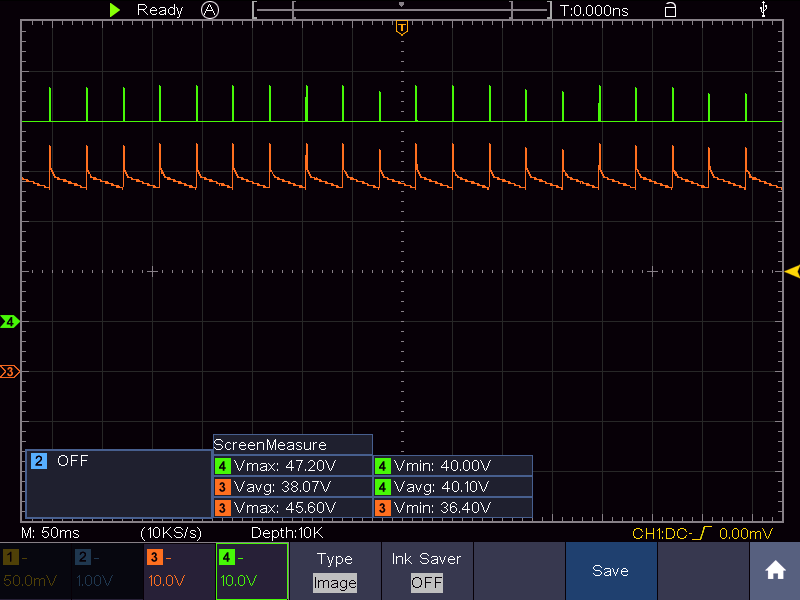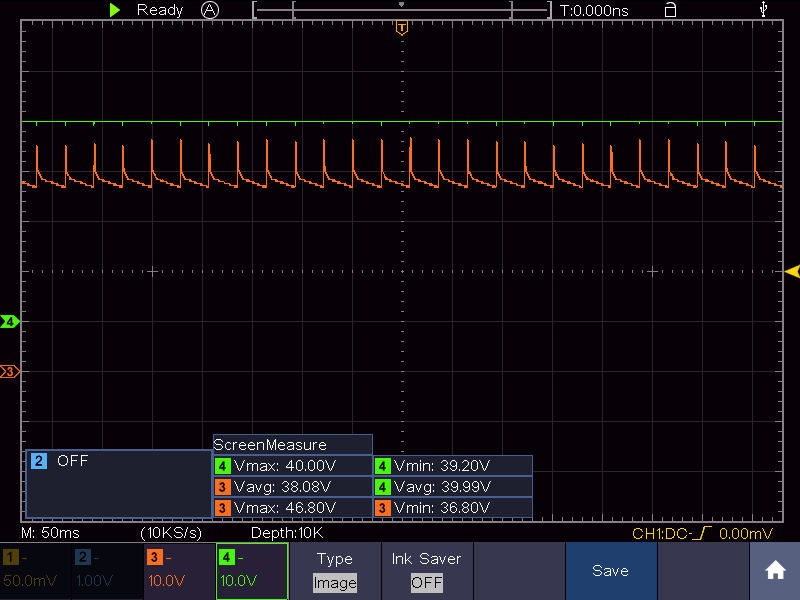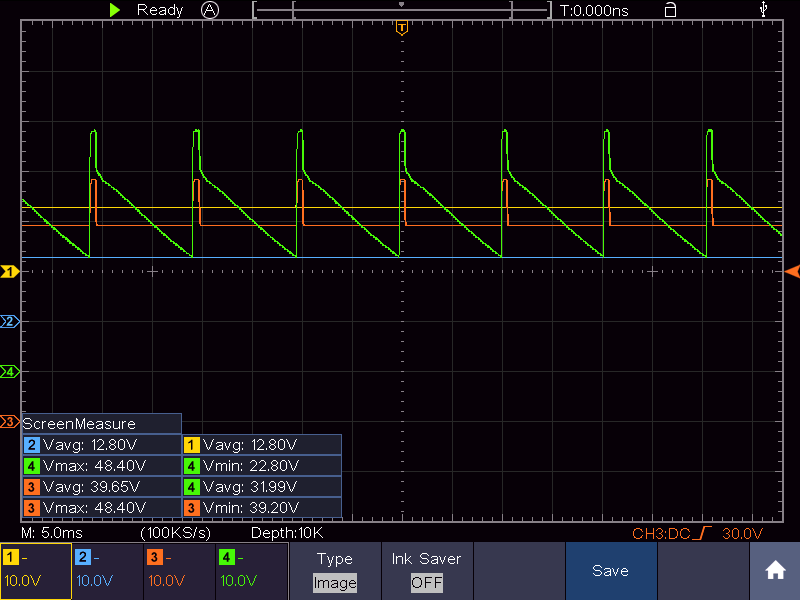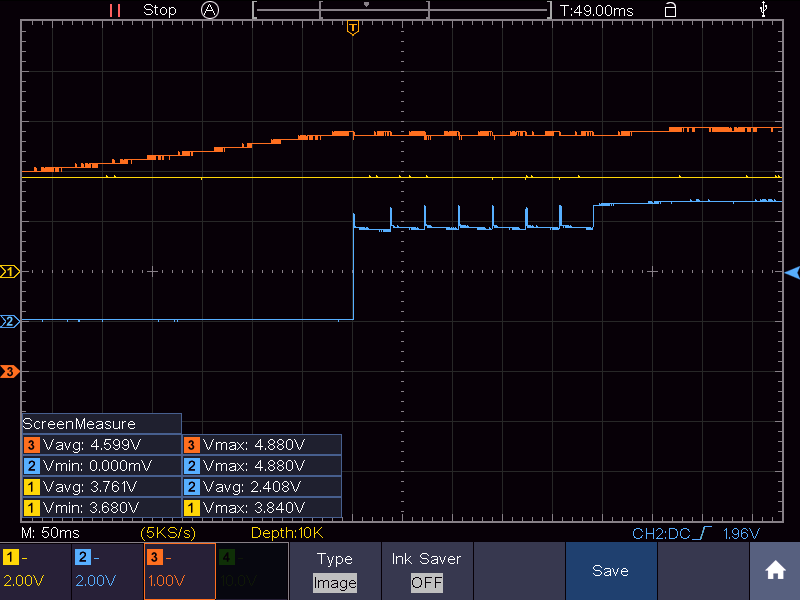Other Parts Discussed in Thread: BQ78350, , BQ76930
Tool/software:
Hello,
I am having an issue with the BQ76200 coupled with the BQ76930 and BQ78350.
The problem that I have is that the power MOSFETs are not fully turning on as it appears that there is a charge pump over load situation.
The schematic of the system is shown below for reference.
I have made obvious changes to the schematic of the BQ76200, changing the 0.1uF filter caps to 10nF and another board with 1nF caps.
Changed the VDDCP capacitance to 2.2uF and 4.4uF to cope with the amount of MOSFETs it is driving and placing 100 ohm resistors on the gates with no signs of improvement.
The BQ78350 is communicating fine with measured outputs on the CHG and DSG pins around 12.4V when powered by a 10S simulated cell board as shown below.
Scoped gate voltages can be seen in the image below.

CHG gate in green and DSG gate in orange, but this is only the case when both are active together.
CHG output only was activated and scoped to show this square wave.

Again, CHG was deactivated and DSG was activated with the following result.

Interestingly the CHG output remained at pack level with some noise shown on the line which matches the peaks of the DSG output.
Any help in this matter would be greatly appreciated.
Many thanks,
Luke





